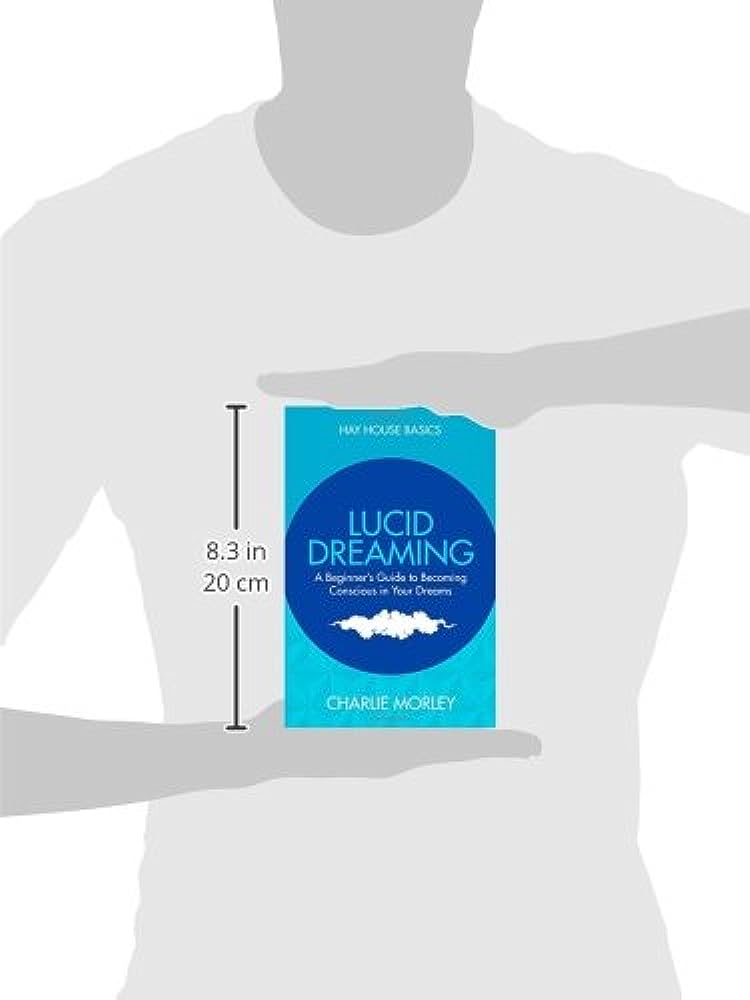Lucid dreaming is a fascinating phenomenon where the dreamer becomes aware of being in a dream state and gains the ability to control their dreams. Imagine being able to fly, meet your favorite fictional characters, or explore surreal landscapes—all within the realm of your mind. In this beginner’s guide, we will explore the secrets of lucid dreaming, understand its importance, and provide you with practical techniques to embark on your own lucid dreaming journey.
Understanding Lucid Dreaming
What is Lucid Dreaming?
Lucid dreaming refers to the state in which the dreamer is fully aware of being in a dream and can actively participate and manipulate the dream narrative. Unlike regular dreams, where we passively experience events, lucid dreams offer a profound sense of consciousness and control.
History and Origins of Lucid Dreaming
The concept of lucid dreaming dates back to ancient civilizations, with references found in Tibetan Buddhism and ancient Greek texts. However, it gained significant attention in the West during the late 19th and early 20th centuries. In 1913, Frederik van Eeden, a Dutch psychiatrist, coined the term “lucid dream,” describing the experience as “the state of clarity” within dreams.
How Lucid Dreams Differ from Regular Dreams
Regular dreams occur spontaneously, and we often lack awareness of the dream’s fictional nature while experiencing them. In contrast, lucid dreams are characterized by increased self-awareness and cognitive control, making them an exceptional and memorable experience.
The Science behind Lucid Dreaming
Lucid dreaming has been extensively studied in the field of neuroscience. Research suggests that lucid dreaming occurs during rapid eye movement (REM) sleep when brain activity is similar to waking consciousness. It involves increased activity in the prefrontal cortex, responsible for self-awareness and decision-making, leading to a heightened state of awareness during dreams.
Benefits of Lucid Dreaming
Personal Growth and Self-Discovery
Lucid dreams offer a unique opportunity for self-exploration and personal growth. By consciously interacting with dream elements, you can confront fears, gain insights into your emotions, and explore your subconscious mind.
Enhancing Creativity and Problem-Solving Abilities
Lucid dreams can be an inspiring space for creativity and innovation. Many famous artists, writers, and inventors have drawn inspiration from their lucid dreams. Additionally, you can practice problem-solving scenarios within dreams, leading to improved cognitive skills in waking life.
Overcoming Fears and Nightmares
For those plagued by recurring nightmares, lucid dreaming can be a powerful tool. When you become lucid during a nightmare, you can confront and transform threatening dream elements, effectively reducing the frequency and intensity of nightmares over time.
Physical and Emotional Healing through Lucid Dreams
Some individuals have reported experiencing physical healing and pain relief within lucid dreams. While the scientific evidence is limited, lucid dreaming can positively impact mental well-being, reducing anxiety and improving mood.
How to Prepare for Lucid Dreaming
Keeping a Dream Journal
Start by keeping a dream journal near your bed. As soon as you wake up, jot down any dreams you can remember. Regularly recording your dreams helps improve dream recall and recognition of dream signs.
Recognizing Dream Signs and Reality Checks
Dream signs are recurring themes, objects, or actions that commonly appear in your dreams. By identifying these signs, you can increase your chances of recognizing when you are dreaming. Performing reality checks throughout the day, like trying to push a finger through your palm, helps build the habit of questioning reality.
Improving Dream Recall
As you progress in your lucid dreaming journey, your dream recall will naturally improve. Practice focusing on your dreams upon waking and avoid rushing out of bed. The more attention you give to your dream memories, the better you will remember them.
Practicing Mindfulness and Meditation
Cultivating mindfulness and meditation during the day can enhance your self-awareness, making it easier to achieve lucidity within dreams. Mindfulness exercises help anchor you in the present moment and can carry over into your dream experiences.
Techniques for Inducing Lucid Dreams
Mnemonic Induction of Lucid Dreams (MILD)
MILD is one of the most effective techniques for inducing lucid dreams. Before falling asleep, repeat a mantra like, “I will recognize when I’m dreaming,” while visualizing yourself becoming lucid in a dream.
Wake-Induced Lucid Dreaming (WILD)
WILD involves transitioning directly from wakefulness to a lucid dream. To practice WILD, lie down in a comfortable position, stay relaxed, and maintain a clear, focused mind while allowing your body to fall asleep while your mind remains awake.
Reality Testing and the DILD Technique
Reality testing involves regularly checking if you are dreaming throughout the day. As you build the habit, it may carry over into your dreams, allowing you to question your reality and recognize that you are dreaming.
Using Lucid Dreaming Supplements
Some individuals use supplements like Galantamine or Choline to enhance dream vividness and lucidity. However, consult a healthcare professional before using any supplements to ensure safety and avoid potential side effects.
Navigating the Lucid Dreaming Experience
Stabilizing Lucid Dreams
Lucid dreams can be fleeting, and excitement may cause you to wake up. To stabilize your dream, engage your senses—touch objects, rub your hands together, or focus on the details of your surroundings.
Controlling and Shaping Your Dream Environment
With practice, you can control your lucid dream environment. Imagine flying, changing scenery, or summoning characters. The limits are only those of your imagination.
Interacting with Dream Characters
Engaging with dream characters can be a profound experience. Talk to them, ask them questions, or seek guidance. Remember that these characters are reflections of your subconscious mind.
Dealing with Nightmares and Sleep Paralysis
Lucid dreaming can occasionally lead to sleep paralysis, a temporary inability to move during the transition between sleep and wakefulness. If you encounter a nightmare or sleep paralysis, remember that you have control. Confront fears or call for help to transform the experience.
Advanced Lucid Dreaming Practices
Lucid Dreaming for Problem-Solving and Decision Making
Lucid dreams provide a safe space to practice decision-making and explore potential solutions to real-life problems. The insights gained from lucid dreams can be applied to waking life challenges.
Exploring the Boundaries of Consciousness
Advanced lucid dreamers may venture into extraordinary experiences, such as exploring the concept of time, parallel universes, or encountering the collective unconscious.
Lucid Dreaming and Spiritual Insights
Some individuals view lucid dreaming as a spiritual practice, seeking transcendental experiences or connecting with higher aspects of their being.
Lucid Dreaming for Recreational and Fantasy Purposes
For recreational purposes, lucid dreaming offers the chance to explore fantastical scenarios or engage in adventures that defy the laws of physics.
Lucid Dreaming and Reality
The Connection between Lucid Dreaming and Reality
Lucid dreaming raises intriguing questions about the nature of reality, consciousness, and the boundaries between waking life and dream states. Exploring lucid dreams can expand our understanding of the mind.
Incorporating Lucid Dreaming into Your Daily Life
As you progress in your lucid dreaming journey, you may find that lucid dreams influence your waking life positively. Creative insights and problem-solving skills developed within dreams can be integrated into your daily routine.
Ethical Considerations in Lucid Dreaming
While lucid dreaming is generally safe and enjoyable, it’s essential to approach this practice ethically. Respect the boundaries of others’ consciousness within shared dreams and focus on self-improvement rather than exploitation.
Common Challenges and How to Overcome Them
Difficulties in Achieving Lucidity
Achieving lucidity can take time and practice. Be patient with yourself, and maintain a consistent dream journal and reality-checking routine.
Maintaining Lucidity and Avoiding Premature Awakening
Excitement or emotional intensity can lead to premature awakening from lucid dreams. Stay calm and grounded, focusing on the dream environment to prolong your lucid experience.
Balancing Sleep Quality and Lucid Dreaming Practice
While exploring lucid dreams can be exciting, remember that maintaining overall sleep quality is essential for physical and mental well-being. Avoid sacrificing sleep for extended lucid dream sessions.
Safety Precautions and Final Thoughts

Ensuring Psychological Well-being
Lucid dreaming can uncover powerful emotions and memories. If you encounter unsettling experiences, take breaks from lucid dreaming and seek support from friends, family, or a mental health professional.
Physical Safety during Lucid Dreaming
Remember that lucid dreams are entirely within your mind. Any physical activity within a dream is symbolic and doesn’t impact your real body. Avoid risky behavior within lucid dreams to ensure safety.
Final Encouragement and Key Takeaways
Embarking on a lucid dreaming journey can be a profound and enlightening experience. Embrace the mysteries of your mind, and with patience and practice, you’ll unlock the secrets of lucid dreaming—a world of endless possibilities within your own consciousness.

Greetings, dear dreamers and seekers of emotional and spiritual healing. I am Aria Blake, a passionate and dedicated professional psychologist…More

